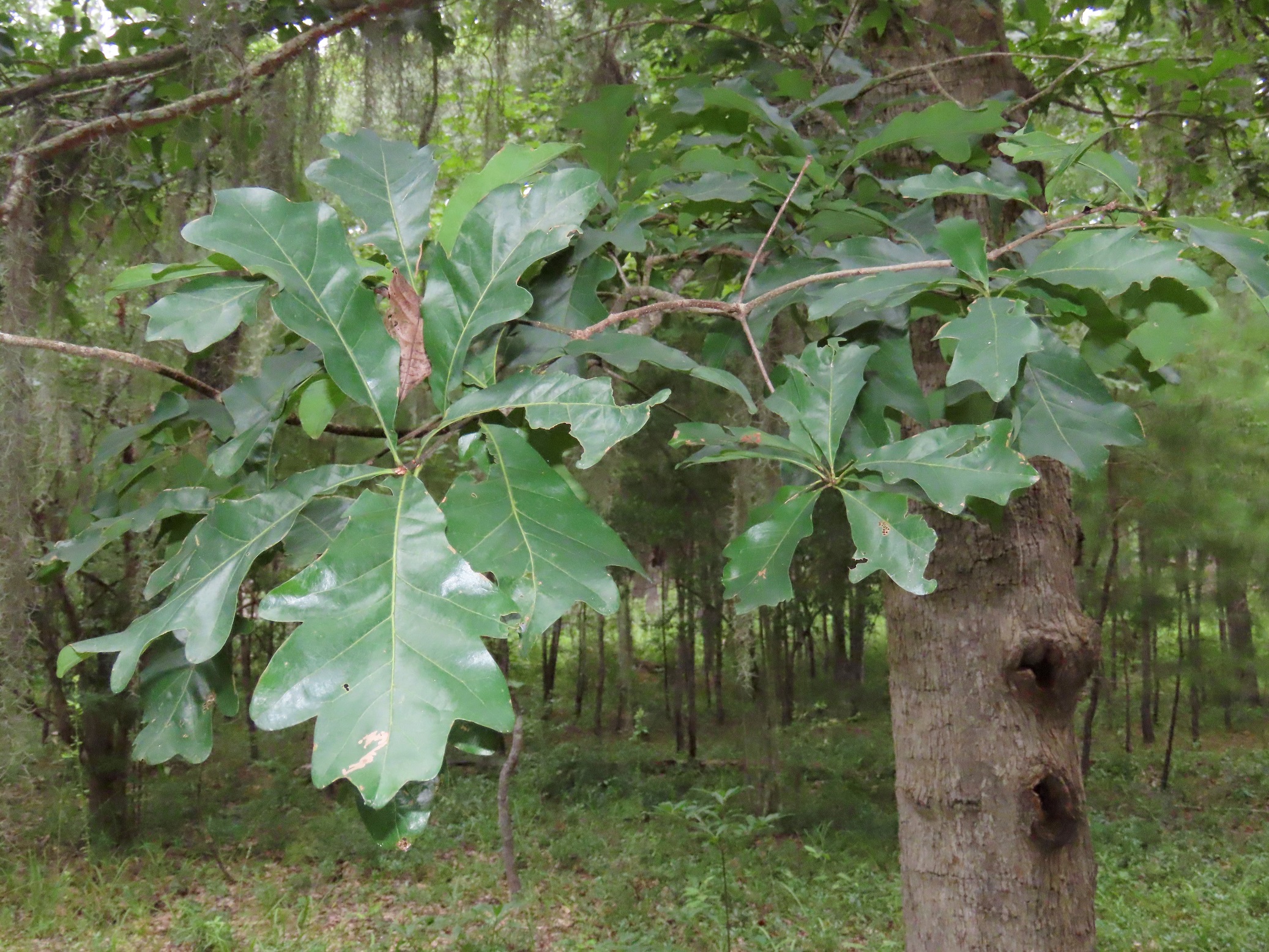
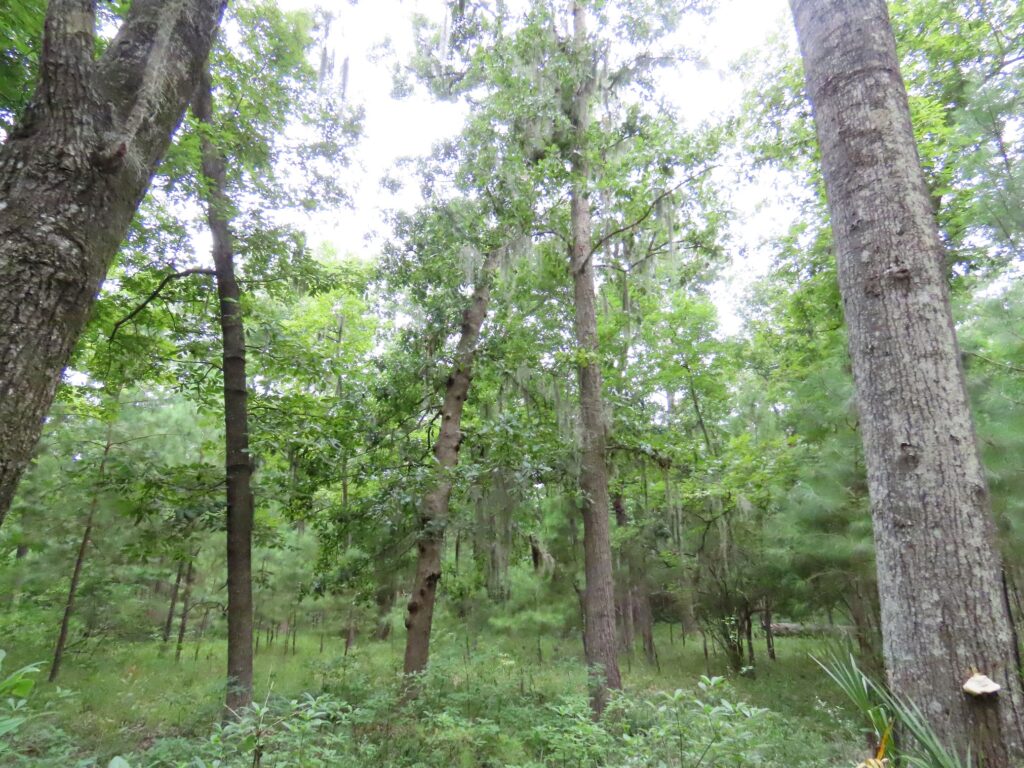
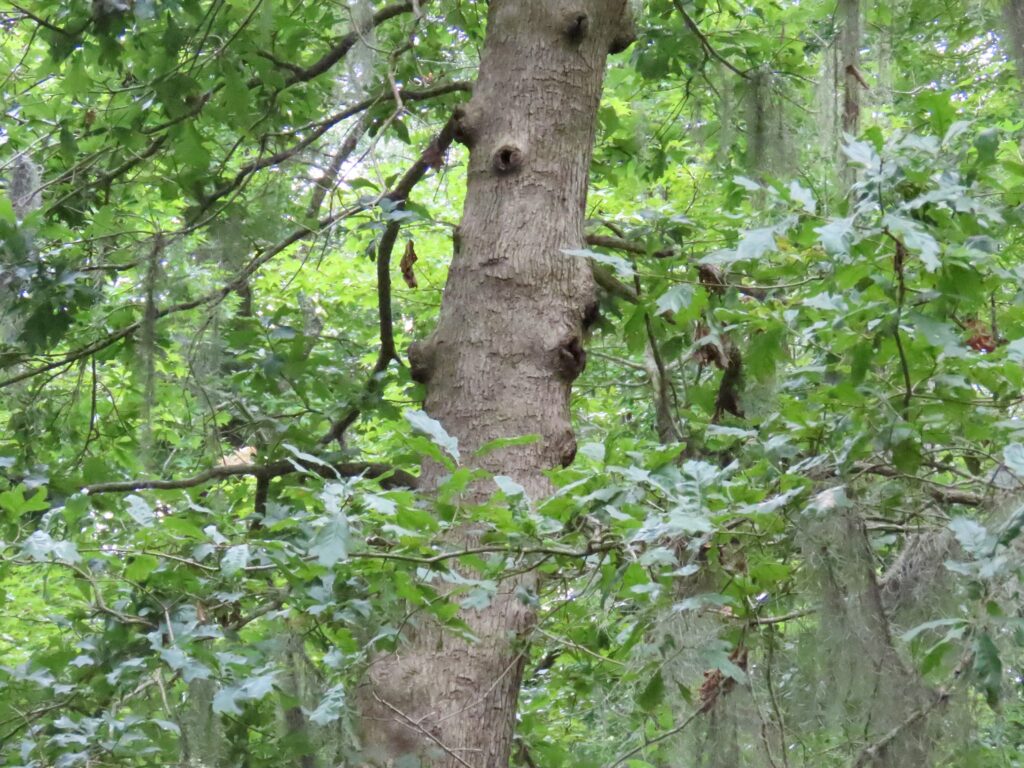
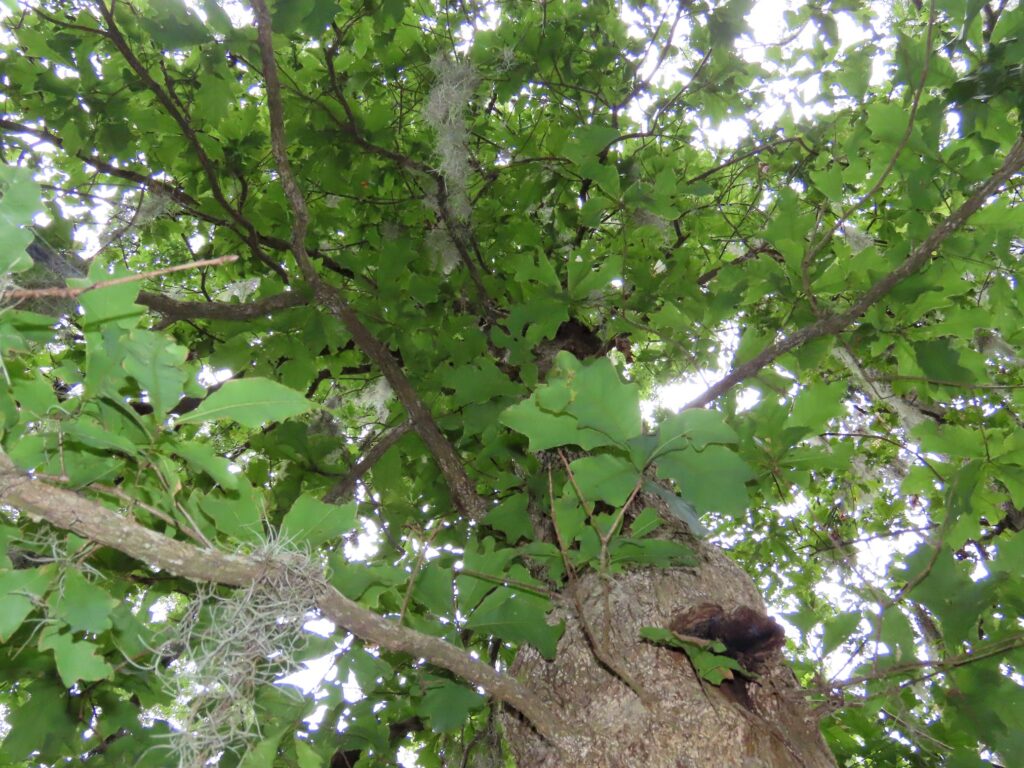
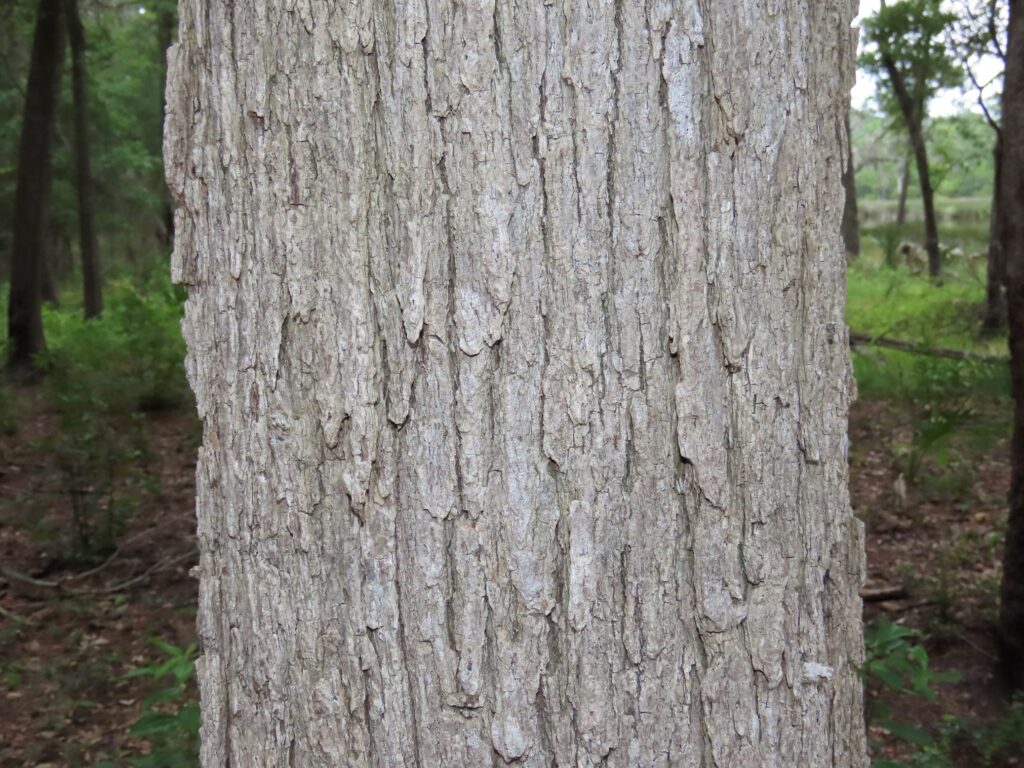
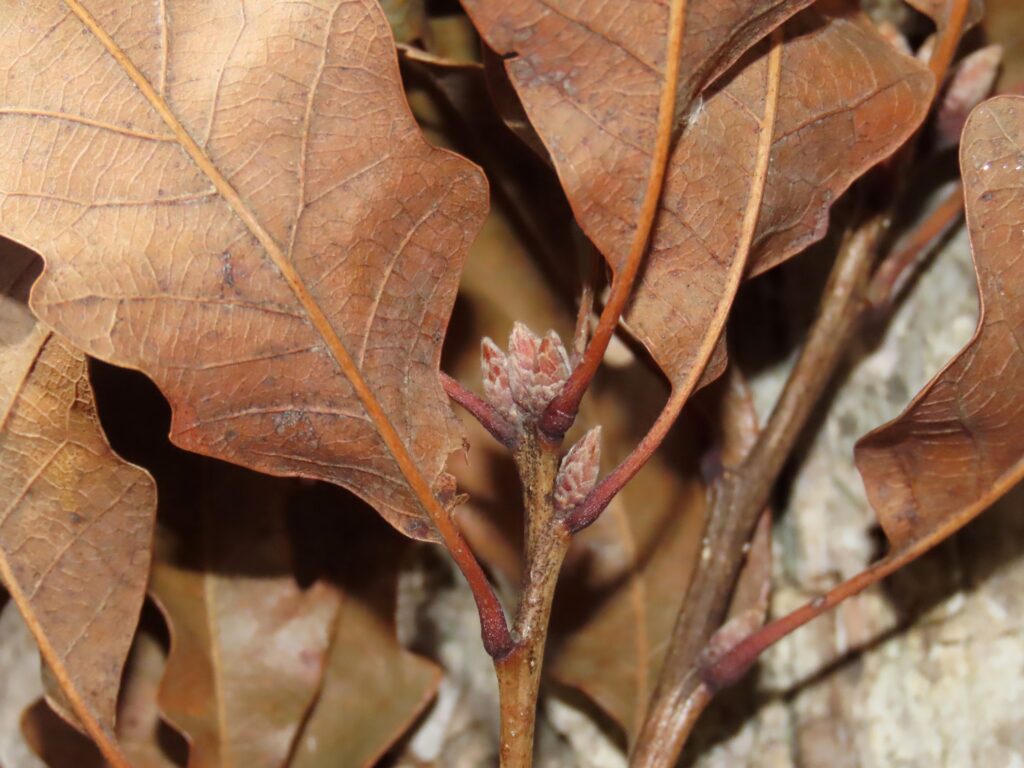
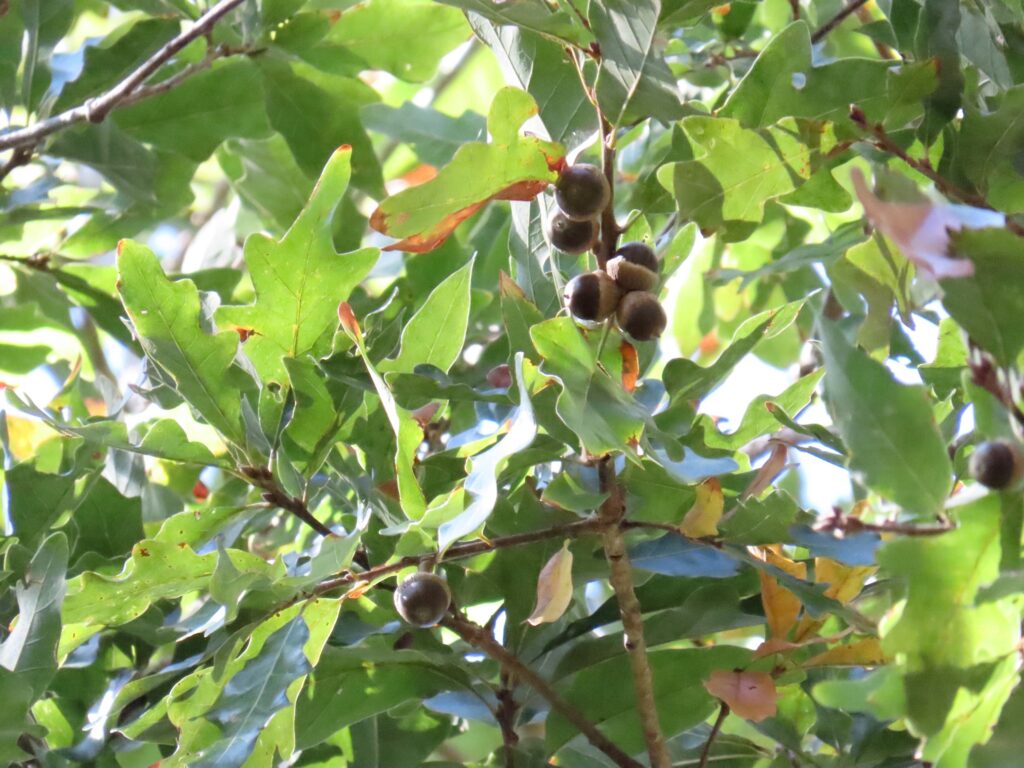
This week for Flora and Fauna Friday we have an imperiled tree that, like sand sliding off a bluff, is silently slipping away from our Sea Island landscape, the Bluff Oak (Quercus austrina).
Bluff Oak is a small oak growing to roughly sixty feet in height. Its trunk is straight and sheathed in fine flakes of platinum-white bark. Often that trunk is blemished with small burls or studded by small low-hanging limbs blending upward into a tall crown. The deciduous leaves of Bluff Oak are a rich emerald-green and feather-esque in shape. These leaves are the length of your outstretched hand but relatively narrow and pointed, with seven-or-so irregular, shallow lobes. They’re not the easiest oak to identify. Yet, their twigs are reddish brown with strongly pointed buds. This is a subtle feature that helps separate them from their closest relatives among the white oaks. Their lime-green acorns are fairly large and sought after by deer and turkeys, if the squirrel and Jays don’t claim them first.
Bluff Oaks grow in the Deep South from Mississippi to North Carolina and down through North Florida. Yet, they are known from only a smattering of trees from a handful of counties in each state. They’re most often encountered perched on a bluff overlooking a marsh or river. Here on the South Carolina Sea Islands, fertile well-drained soil in maritime fringe forests in view of the marsh and with a stable shallow water table seems to be their preferred natural habitat. But that comes with a caveat. Bluff Oaks are weird.
Very few people, if any, have a good handle on what makes Bluff Oaks tick in their natural habitats. They occupy a very narrow niche in the Sea Island ecosystem. A niche that was historically quite stable but today quite rare due to the meddling of man. You see, Bluff Oaks love to live on bluffs, with a panoramic prospect of the marsh or a view down a bend in the river. But that’s most people’s favorite place to live as well! That’s bad luck for the Oaks. Untold scores have been clear-cut for waterfront development over the last 75 years. Many of the mature Bluff Oaks still alive today are nestled quietly in people’s yards, on church grounds, near boat landings, or on old government lands along rivers. Long before large-scale residential development began sweeping through the South, Bluff Oaks were imperiled by logging and agriculture. Clearcutting for fields on fertile sands removed mature trees from all but the bluff margins. Bluff top plantation houses displaced them further. The old trees that survived on the landscape then had the stability of the shallow water pulled out from under them by ditching and diking. Drying or flooding the few trees still hanging on. Their progeny subsequently clung to cliff faces, marsh margined peninsulas, and remote islands that were too impractical to farm and which foresters found inconvenient to plant in pine. Many of the surviving Bluff Oaks were likely intentionally spared the axe, due to their compact growth and long crown making them unfit for lumber, and thus not worth the fuel to haul to the mill. Or that’s the history I at least surmise led to their near demise.
Bluff Oaks were rare to begin with, grew in inconvenient locations to access, and had little economic value. So people paid them little attention. Meaning we have a very poor understanding of what their historic range used to be. Now that there are so few left, it’s incredibly difficult to fit enough puzzle pieces together to see the full picture of their ecology. I suspect they’re a botanical relict of a bygone time. An arboreal artifact from an ancient age, likely a species that thrived before the last ice-age, compressed by climatic swings and then pushed towards the brink by our hands. The Bluff Oak’s distribution is incredibly disjointed, with tens or hundreds of miles between populations. Those populations are rarely more than a half-dozen trees. Most are just one or two trunks. Less than ten sites are known with more than ten trees. That means there is next to no gene flow between populations. Often, there are no saplings growing that can replace mature trees when they perish. They are a declining species on the path to oblivion.
But all hope is not lost! Bluff Oaks actually do well as a shade tree in coastal suburbs and developments. They even thrive when reintroduced to their natural habitats on bluffs and banks. We haven’t pushed this species off the bluff yet! There is a space for them in the modern world. We just need to lend a helping hand. Right now, there is active research underway led by the North American Land Trust, in partnership with the US Forest Service and several Arboretums, to collect acorns and scionwood from Bluff Oaks across the country. These acorns and grafts will be grown out into mature trees as living seed banks. The USFS is even starting a nursery for Bluff Oaks in SC within the Francis Marion National Forest. The acorns produced by these nursery and specimen trees will be used for conservation of the species across the Southeast.
You can help in this effort too! The most important thing this research needs help with is finding new Bluff Oak populations. Currently, only one single site in Charleston County is known with surviving Bluff Oaks. Those seven trees are standing proud today on one of EIOLT’s conservation easements, right here on Edisto Island. Which means there very well might be a Bluff Oak standing on the edge of the woods right outside your window! If you think you know where a Bluff Oak is, anywhere in South Carolina, please reach out to EIOLT with the location of the tree and take some photos of the bark, leaves, and twigs if you can. We’d love to document its location, collect acorns, and help save this imperiled species.
Bluff Oak seedlings are not currently readily available anywhere for purchase for transplantation. At least not anywhere I can find online. But I’m hopefully that, in the not so distant future, they will be. And that this handsome hardwood can once again grace the banks of Edisto Island. Waving with Spanish Moss over our waterways, shoulder to shoulder with Live Oaks and arm in arm with Edistonians.
If you’d like to learn more about this research and restoration effort, please check out the below links:
https://www.internationaloaksociety.org/content/seeking-quercus-austrina-conservation